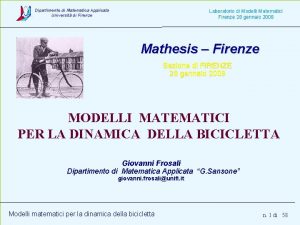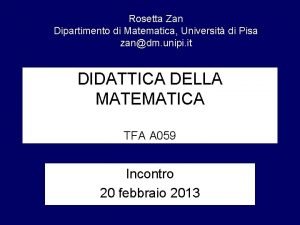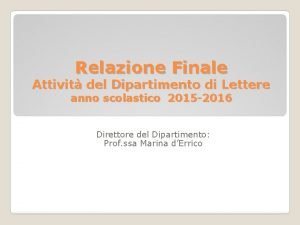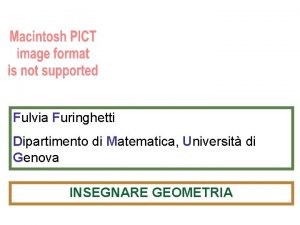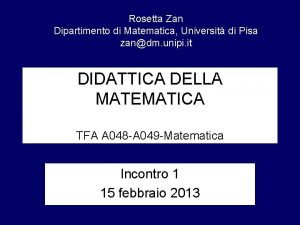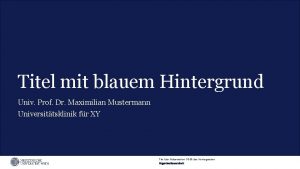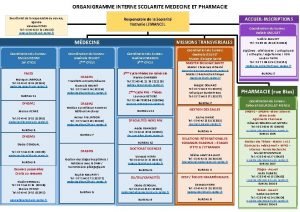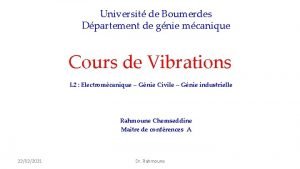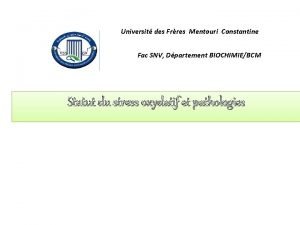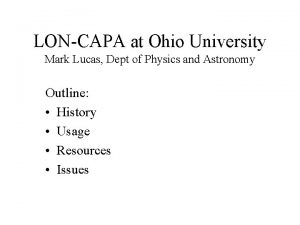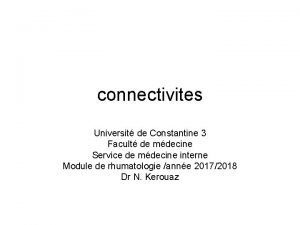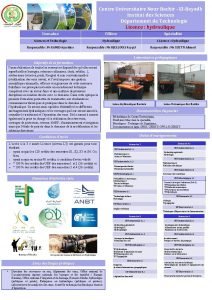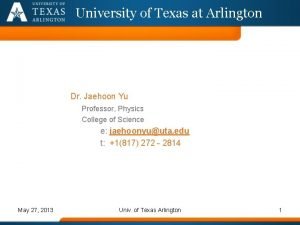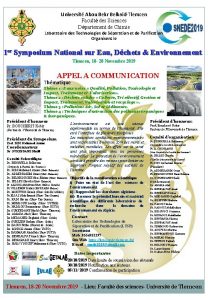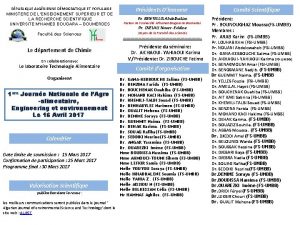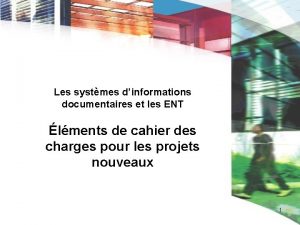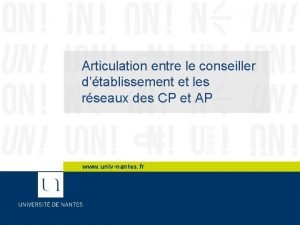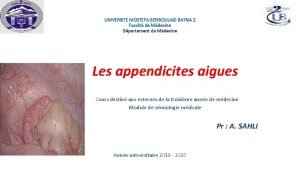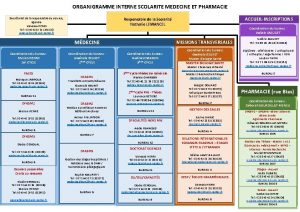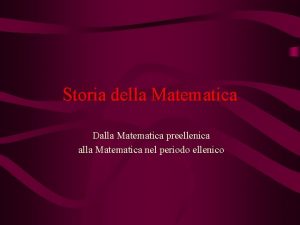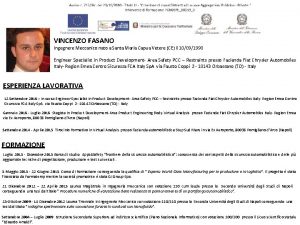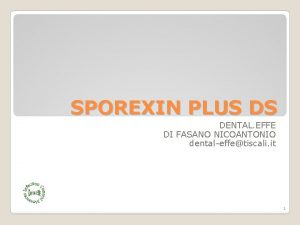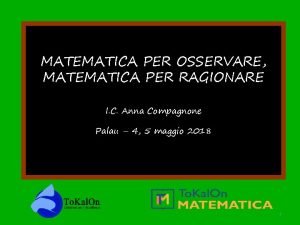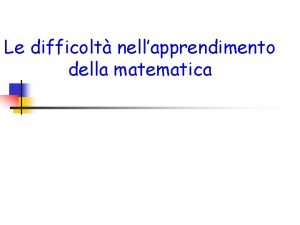Antonio Fasano Dipartimento di Matematica U Dini Univ


























- Slides: 26

Antonio Fasano Dipartimento di Matematica U. Dini, Univ. Firenze IASI – CNR Roma A new model for blood flow in capillaries

A. FASANO, A. FARINA, J. MIZERSKI. A new model for blood flow in fenestrated capillaries with application to ultrafiltration in kidney glomeruli, submitted

Blood composition • 7% of the human body weight, • average density of approximately 1060 kg/m 3 • average adult blood volume 5 liters • plasma 54. 3% • RBC’s (erythrocytes) 45% • WBC’s (leukocytes) 0. 7% • platelets (thrombocytes) negligible volume fraction

RBC’s properties Volume VRBC 90 μm 3 Diameter d. RBC 7 8 m Very flexible

Quoting from G. Mchedlishvili, Basic factor determining the hemorheological disorders in the microcirculation, Clinical Hemorheology and Microcirculation 30 (2004) 179 -180. the available fluid mechanical laws cannot be applied for a better understanding of the microcirculation in the living capillaries, and the hemorheology in the microcirculation requires another approach than regularities of the fluid mechanics

General trend: Adapting rheological parameters to the vessel size

Our model ignores fluid dynamics and considers just Newton’s law

Translating sequence of RBCs and plasma elements Translating element Driving force Pressure gradient drag The drag is due to the highly sheared plasma film

Translating sequence of RBCs and plasma Translating element Driving force a/R 1/3 when the hematocrit is 0. 45 Pressure gradient drag The drag is due to the highly sheared plasma film

If the capillary is fenestrated the plasma loss causes a progressive decrease of the element length

The renal glomerulus is a bundle of capillaries hosted in the Bowman’s capsule fenestrated capillaries

Plasma cross flow is caused by TMP (transmembrane pressure): TMP = hydraulic pressure difference minus oncotic pressure (blood colloid osmotic pressure)

R Element volume Vel = R 2 a + VRBC Hematocrit

The motion of a single element (Newton’s law) Pressure drop density Variable owing to plasma loss Friction coefficient

A guess of the friction coefficient Take = 0. 45 = 1 mm/s = 40 mm Hg/mm = in the steady state equation = 8. 8 g/s.

in a 1. 5 mm capillary there about 200 of such elements It makes sense to pass to a continuous model Divide by

Conservation of RBCs To be coupled with a law for plasma outflow … Momentum balance

Balance equation for plasma external pressure constant Starling’s law C = albumin concentration RTC = “oncotic” pressure (Van’t Hoff law)

Dimensionless variables (L 1. 5 mm) convection time 1. 5 sec

Momentum balance inertia is negligible

Combining the RBC’s and plasma balance equations or

Introducing the “filtration time” we get the dimensionless system compares oncotic and hydraulic pressures

The case of glomeruli can be estimated, knowing that the relative change of during the convection time is 1/3 We are interested in the (quasi) steady state

Eliminating …

A second order ODE Cauchy data:

Experimenting with various friction coefficients and Os
 Dipartimento di matematica firenze
Dipartimento di matematica firenze Unisci 9 punti con 4 segmenti
Unisci 9 punti con 4 segmenti Relazione finale referente dipartimento
Relazione finale referente dipartimento Fulvia furinghetti
Fulvia furinghetti Dipartimento matematica pisa
Dipartimento matematica pisa Ent université tours
Ent université tours Univ prof titel
Univ prof titel Scolarité médecine nantes
Scolarité médecine nantes Http:fsi-st univ-boumerdes-dz
Http:fsi-st univ-boumerdes-dz (univ. caxias do sul) escolha a alternativa que completa
(univ. caxias do sul) escolha a alternativa que completa Fs univ umbb
Fs univ umbb Snv mentouri
Snv mentouri Moodle tln
Moodle tln State univ grant - sug ug
State univ grant - sug ug Loncapa ohio university
Loncapa ohio university Univ constantine 3
Univ constantine 3 Centre universitaire nour bachir el-bayadh
Centre universitaire nour bachir el-bayadh Uta maverick activity center
Uta maverick activity center Kostenauflösung beispiel
Kostenauflösung beispiel Dr abou bekr
Dr abou bekr Umbb fs
Umbb fs Ent iut valenciennes
Ent iut valenciennes Prodoc univ nantes
Prodoc univ nantes Université batna 2 mostefa ben boulaid
Université batna 2 mostefa ben boulaid Faculté de medecine constantine 3
Faculté de medecine constantine 3 Ufr sfa poitiers
Ufr sfa poitiers Scolarité pharmacie nantes
Scolarité pharmacie nantes
